Modern agriculture has been using granular urea as an effective and widely used nitrogen fertilizer. Farmers who wish to increase their crop yield will find that granular urea is a cost-effective source of high nitrogen content, usually at about 46%. Granular urea can be applied in various ways such broadcasting, top dressing or it can even be incorporated into the soil that makes it suitable for different farming systems. This article explores the unique characteristics of granular urea, its role in agricultural productivity and how best to apply it. By knowing all these elements concerned, farmers can exploit the benefits of this foremost form of nitrogen fertilizer for maximal growth and sustainable agriculture.
What Makes Granular Urea a Popular Choice for Fertilizer?
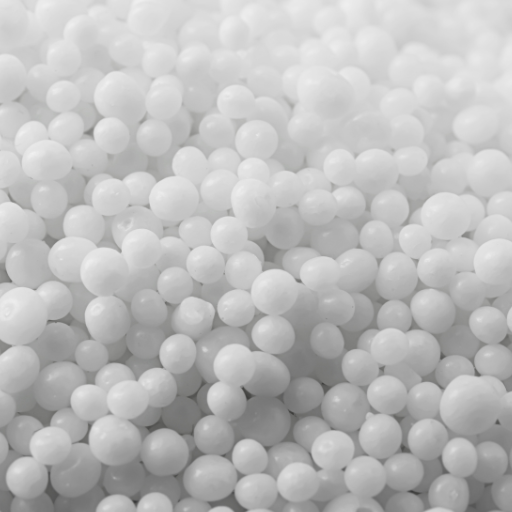
There are several reasons why granular urea is such a popular fertilizer. The first is that its nitrogen content is very high, typically about 46%. This means it is a low cost source of this vital nutrient because small quantities can provide adequate amounts of the nutrient to plants. Additionally, it offers different application options like broadcasting and incorporation into soil which suit diverse types of farming systems. Granular urea also has a relatively low price level, can be easily stored and will maintain its effectiveness for long periods even under adverse conditions so it’s a good option in large- and small-scale farming systems. These attributes have helped contribute to the widespread adoption and acceptance of the product in agriculture.
Comparing Granular and Prilled Urea
Granular urea as well as prilled urea have different physical forms which determine the way they are applied. Granules are larger particles that usually make for slower release rates thus allowing for precision applications or reduced loss through volatilization. In turn, smaller prills quickly dissolve in their surroundings thereby releasing nitrogen more rapidly than larger granules would do. Such rapid dissolution may be particularly advantageous if fast availability of nitrogen is important for certain crops. Still, both kinds have same chemical composition and give out ample amounts of nitrogen; hence can be used effectively depending on specific farm needs.
The Advantages of Granular Form in Fertilizer Application
Granulated urea provides several unique advantages when used as fertilizer. One key advantage here lies on its characteristics such as slow-release mechanisms that reduce nitrogen losses via volatilization by supplying N gradually to crops over time. This slow release prevents leaching actions which could contaminate groundwater with nitrate ions (thus being an eco-friendly alternative). Typically, granulated urea has particle sizes ranging from 2–4 mm making it possible to apply evenly all over the ground surface accurately as well as uniformly distribute it without any wastage. It is also less prone to moisture absorption compared to prilled urea, hence improving its storability and reducing caking effects. In addition, granulated urea’s efficient spread patterns are known to enhance yields and lengthen the duration during which nitrogen is available thereby minimizing the frequency of application in farming operations.
Why Urea is a Key Nitrogen Source for Lawns and Gardens
Urea is an important source of nitrogen for lawns and gardens because it has a high nitrogen content that supports lush green growth. This substance is water-soluble, which makes it quickly accessible by plants. Apart from this fact, urea plays a part in soil fertility by being incorporated into the process of nitrogen cycle where it changes into ammonia that finally becomes nitrate; two forms of nitrogen that can be easily absorbed by plants. Furthermore, it cost effective and easy to apply thus making it accessible even to amateur gardeners. However, appropriate use of urea should be observed so as to avoid burning due excess nitrogen while ensuring the best results for the garden.
How Does Granular Urea Work as a Nitrogen Fertilizer?
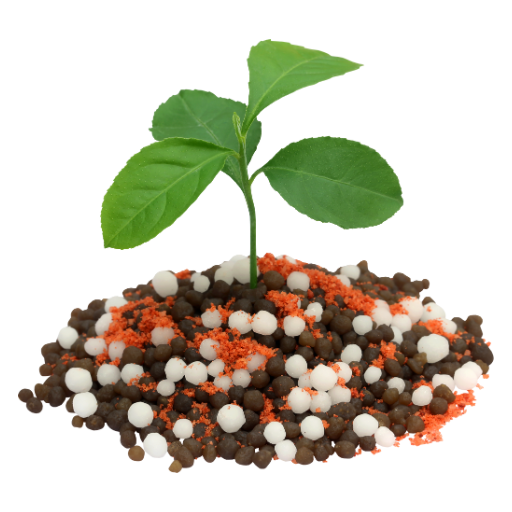
Granular urea functions as a slowly-decomposing nitrogen fertilizer in the soil, releasing nitrogen over time. When it is added to the soil, urea is broken down into ammonium carbonate by microorganisms which further decays into ammonia form that can be easily taken up by plants. This conversion process provides a steady supply of nitrogen for sustained growth of plants and minimizes the risk of loss through leaching of nitrogen. Moreover, granulation enhances even distribution and slow release properties resulting into less frequency of application and better nutrient availability that makes it a pragmatic and effective medium for improving soil fertility and crop productivity.
Nitrogen Release Process Deconstructed
The nitrogen release process starts with wetting granular urea which has been applied to the soil. Hydrolysis, mediated by enzyme urease, facilitates urea-to-ammonium carbonate conversion by bacteria found in the soil. Further breaking down occurs when carbon dioxide (CO2) and ammonia (NH3) are released during decomposition of ammonium carbonate. Ammonia reacts with water forming ammonium (NH4+) that can be easily taken up by plant roots. Afterwards, nitrification takes place whereby soil bacteria convert ammonium into nitrate (NO3-). Nitrate is another form of usable nitrogen for efficient plant absorption and utilization in biological processes leading to growth. Sequentially this transformation guarantees a constant flow of nitrogen thus promoting an unbroken sequence of healthy growth stages.
The Significance of Urea in Plant Health Maintenance
One important role played by urea is being an excellent source for highly efficient nitrogen supplies necessary for various physiological procedures that take place within the plant’s system. In order to make amino acids that are used for proteins synthesis, chlorophyll production as well as nucleic acids responsible for growth and development among other things; there is need to have ample supply off N2 in the system since these cannot be produced without an adequate supply from outside. It is therefore no wonder that urea is being used to achieve proper leaf development, enhance photosynthesis and above all increase the amount of food harvested. Moreover, by promoting root development, urea makes it easy for plants to obtain more nutrients from soil.
According to technical parameters information from reliable sources:
- Urea Nitrogen Content: Urea contains approximately 46% nitrogen by weight making it the highest nitrogen-containing fertilizer
- Urea Application Efficiency: Urea is water soluble hence can be applied in solution form or dissolved for use with precision irrigation systems.
- Recommended Application Rate Of Urea: The rates vary but commonly they are between 100-200 kg/ha depending on crop needs and soil conditions
- Urea Conversion Efficiency: The conversion of urea into available forms of nitrogen (ammonium and nitrate) comes through microbial processes thereby making its release gradual and slow
These values support the claims of this substance’s efficacy in agriculture as it provides a steady release of balanced nitrogen supply for robust healthiness and productivity.
Ensuring Proper Dissolution and Soil Application
In conclusion, soil testing is also a useful pre-application procedure to determine the existing levels of nutrient and hence adjust the amount of urea applied. Over fertilization is avoided through this practice and reduces the chances of nutrients finding their way into rivers, lakes and oceans. Safeguarding environment health involves using urea responsibly that increases plants development at their best.
Applying Granular Urea Correctly: Tips and Techniques
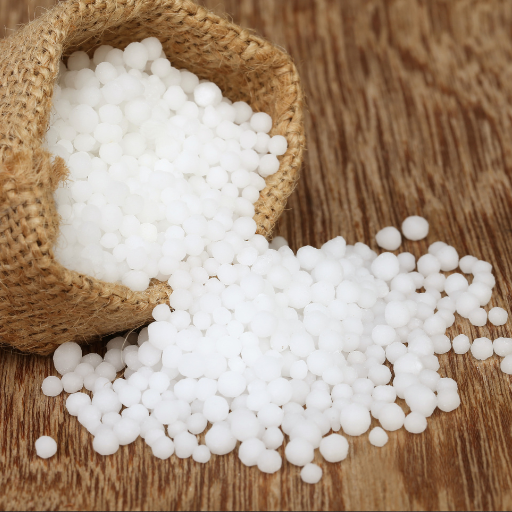
When you are applying granular urea, make sure that it is distributed evenly across the field using a broadcast spreader. This way is used to achieve an even nitrogen availability. After application, the urea should be incorporated into the soil as soon as possible through light tilling or watering in order to avoid volatilization losses of nitrogen. Moreover, check the weather before applying urea because doing it on cooler days with less wind lowers the amount of nitrogen that can be lost. Furthermore, before making any application it would be good for one to know how much of this substance should be used by performing a soil test reducing chances of over-fertilizing which might cause environmental damage later on. Therefore, these tips will help you apply urea efficiently and promote healthy plant growth while preserving the surroundings.
Best Practices for Incorporating Urea Fertilizer into Soil
Optimal nutrient absorption and minimal environmental impact can only be achieved if certain fundamental guidelines are followed while employing urea fertilizer into soil. First, always apply urea at recommended rates which vary from 40-200 pounds per acre depending on crop type and soil condition. Urea should therefore be mixed in within 24 hours so as to minimize loss of nitrogen through volatilization after its application was done by means of either light tillage or it being irrigated with at least half inch water thus help to push it down in to the deeper soils.
Secondly, effectiveness of urea is dependent on temperature and moisture levels present in a specific piece of land.. Ideal temperatures for successful utilization by microorganisms range between 50°F and 65°F.Optimum moisture content in soil just prior to fertilizer applications also greatly enhances effectiveness.
Lastly slow release products such as controlled-release urea fertilizers can also inhibit break down processes resulting in reduced N-lost from applied fertilizer thus maintaining fertility status longer besides improving nutrient use efficiency during crop uptake periods. This is the only way to ensure that urea fertilizers are properly applied and used in soil making it sustainable for crop production.
Timing and Rates: Maximizing the Effectiveness of Urea Nitrogen Fertilizer
In order to maximize the effectiveness of urea nitrogen fertilizer, timing should be done taking into account crop’s nitrogen uptake rates. Most crops have high peaks of nitrogen requirement during their vegetative growth stage. If urea is either aplied too early or too late, it will not be absorbed by plants optimally. For example, corn often requires split applications with an initial dose at planting and another one during rapid vegetative growth phase usually between 30-40 days after emergence.
Soil type, previous cropping history and yield targets may also necessitate adjustments in urea application rates. For instance, sandy soils containing low organic matter require higher application rates up to 200 pounds per acre while loamy soils with moderate levels of organic material will need approximately 100-150 pounds per acre. On this note, accurate soil tests can indicate current nutrient content levels and give guidelines specifically for the crop’s needs regarding how much micro-elements must be utilized for adequate farming.
Technical parameters to consider include:
- Optimal Soil Temperature Range: The range of 50°F to 65°F encourages microbial activity.
- Application Rate: Different crops are expected to receive different quantities or urea which ranges between 40-200 pounds per acre.
- Incorporation Depth: At least half an inch water or light tillage within twenty-four hours.
- Controlled-Release Options: Inhibitors such as polymer-coated urea reduce loss of nitrogen through volatilization thereby enhancing nutrient efficiency.
Farmers can get the most out of urea nitrogen fertilizers by following these instructions and adapting what they do to each particular field situation, and that is how they can have sturdy crops and sustainable agriculture.
Urea Granules Role in Foliar Sprays and Soil Applications
The high nitrogen content in Urea granules makes them crucially important while applying them on leaves and soils. This is because their absorption by leaves as foliar sprays facilitates a quick increase in nitrogen levels which corrects deficiencies as well as boosts growth during critical stages. Foliar urea sprays are commonly used at concentrations ranging from 0.5% to 2%, with lower rates being favored to avoid scorching of leaves. As far as soil applications are concerned, it is used primarily as a source of nitrogen to support continuous growth and development of crops. Optimum results dictate incorporation into the soil or use with irrigation so as to avoid volatilization.
- Foliar Spray Concentration: 0.5% to 2% for Preventing Phytotoxicity
- Absorption Time: Within 24-48 hours after application, uresia is absorbed by the leaves.
- Soil Incorporation Depth: 0.5-1 inch for Reduction in Nitrogen Loss through Volatilization
- Granule Size: Dissolution of smaller granules happens faster resulting in even spreading on land and uptake.
By adhering to these guidelines and adjusting practices based on specific crop and soil conditions, the use of urea granules can greatly improve agricultural productivity.
Best Practices for Applying Granular Urea to Your Lawn or Garden
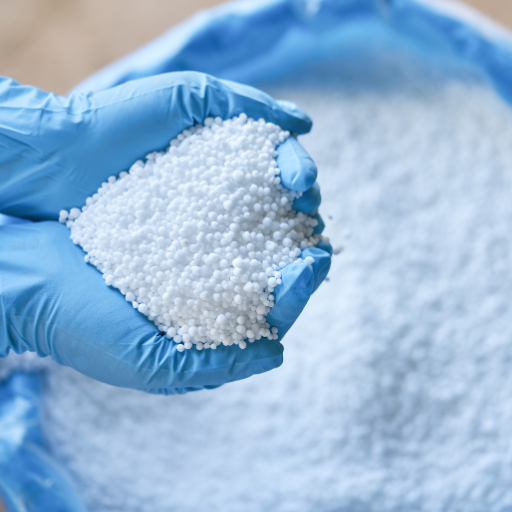
To make sure that you apply granular urea correctly on your lawn or garden and get the best results, follow these guidelines. First, test your soil to detect nutrients lacking and fix the application rates appropriately. This will help prevent uneven growth patterns in your grass as well as avoid burning it. After applying Urea immediately water your lawn or garden thoroughly to dissolve the granules and push nitrogen into the soil reducing risk of volatilization. When plants are growing fast during the growing season is when urea should be applied because they can benefit most from such nutrients which are usually abundant early springs or falls.
For appropriate positioning on a year-round basis, avoid spreading urea when there is too much wind blowing so that granules cannot leave their place. Also, ensure to go with recommended application rates indicated on product labels so that you may not over-fertilize as well as damage your plants.
Timeframes and Methods for Maximum Nutrient Intake
When dealing with granular urea for maximal nutrient intake, timing becomes crucial. The most suitable moment to use urea is during periods of active plant growth, which mostly occur in early spring or autumn. Cooler temperatures nitrogen loss through ammonia volatilization by using Urea improves efficiency.
- Application Timing: Early spring or autumn during active growth periods.
- Soil Temperature: Apply urea when soil temperatures are between 50°F and 70°F (10°C to 21°C).
- Moisture Conditions: Ensure the soil is moist but not waterlogged; adequate moisture facilitates the dissolution and absorption of urea.
- Watering After Application: Water the area immediately after applying urea to help dissolve the granules and incorporate nitrogen into the soil profile.
- Weather Conditions: Avoid applying urea on windy days to prevent granule drift and uneven application.
Techniques for effective urea application include:
- Broadcast Spreading: Use a broadcast spreader for even distribution to avoid patchy growth and potential leaf burn.
- Incorporation into Soil: For garden applications, lightly till or incorporate urea into the top 0.5 to 1 inch of soil to reduce nitrogen loss.
- Split Applications: In regions with high rainfall or sandy soils, consider split applications to provide a steady nitrogen supply and minimize leaching.
By following these guidelines and considering specific crop and environmental conditions, the efficiency of urea in supporting plant growth can be maximized.
Avoiding Common Mistakes in Urea Fertilization
- Over-Application: Applying too much urea can lead to nitrogen burn, which damages plant tissues and inhibits growth. For instance, studies show that excessive nitrogen can result in nitrate accumulation in leafy vegetables, posing health risks.
- Surface Application Without Incorporation: Simply spreading urea on the surface without incorporating it into the soil can result in significant nitrogen loss through volatilization. Research indicates that up to 50% of nitrogen can be lost if urea is not integrated into the soil.
- Incorrect Timing: Applying urea during dormant periods or in very high temperatures can reduce its effectiveness. For example, application during late summer can lead to volatilization and nutrient loss, with studies showing up to 30% nitrogen loss under warm conditions.
- Ignoring Soil pH: Urea is less effective in alkaline soils where pH is higher than 7.5, as it promotes ammonia volatilization. Soil tests revealing pH levels of 8 or above should warrant caution, with potential loss exceeding 20%.
- Lack of Moisture: Applying urea to dry soil can lead to poor dissolution and uptake. Research has demonstrated that insufficient soil moisture can result in up to a 40% reduction in nitrogen efficiency.
- Inconsistent Application: Uneven application can cause patchy growth and nutrient hotspots. Using calibrated equipment can help maintain consistency; for example, a well-calibrated spreader can reduce application variance to less than 5%.
By addressing these common mistakes with proper technique and timing, the benefits of urea fertilization can be fully realized, optimizing both plant health and yield.
Integrating Urea with Other Fertilizers: NPK and Beyond
Increasing crop yield and improving soil health can be achieved through combining urea with other fertilizers, including NPK (Nitrogen, Phosphorous, Potassium) blends. NPK fertilizers have a balanced nutrient profile that is important for plant growth. They offer a broader range of nutrients when they are combined with urea. Proper integration requires understanding the nutritional requirements of your crops and adjusting application rates accordingly.
Taking maize as an example, 40-60 kg N/ha from urea combined with 20-30 kg P/ha and 30-50 kg K/ha from NPK blends may be useful. To do this, there is need to conduct soil tests so as to ascertain the level of nutrients and pH. This ensures that the fertilizers are applied at the right time in the right quantities to avoid excessive use and environmental pollution through runoff. Techniques like banding or split applications can enhance uptake of nutrients while limiting Thier impacts on environment respectively. Additionally, employing slow-release formulations or urease inhibitors for urea could optimize nitrogen status leading to improved efficiency in nutrient supply strategies which stand sustainable grounds.
Why Urea Nitrogen Fertilizer is Essential for Optimizing Plant Growth
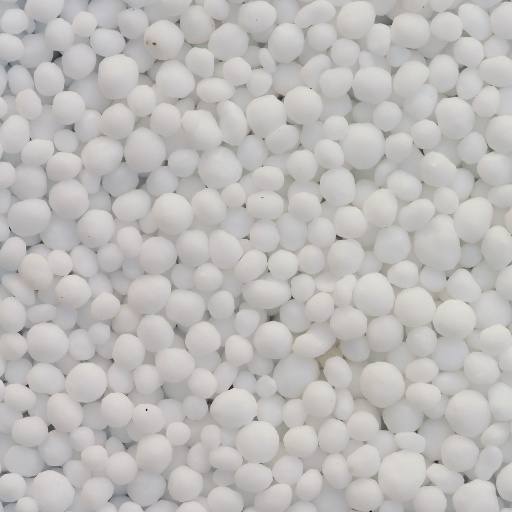
Due to its high nitrogen content, urea nitrogen fertilizer is very important in optimizing plant growth because this nutrient is a critical formula for the plants. In addition, chlorophyll that constitutes a valuable component of the photosynthesis process in plants contains nitrogen. Nitrogen also takes part in producing amino acids, which are used as building blocks in protein synthesis and enzymes responsible for cellular activities. By being highly soluble in water, urea can be easily taken up by plants when it is applied to soil. Furthermore, farmers can use it through different application methods such as broadcasting, banding or foliar spray which enables effective nitrogen delivery. Therefore using urea with other fertilizers results into an even distribution of nutrients hence healthier plant and more crops.
Expanding on Urea’s role towards photosynthesis
The significance of urea to enhancing photosynthesis lies within its ability to provide nitrogen for chlorophyll synthesis; the pigment that absorbs light energy during photosynthesis. A well-nourished plant with enough supply of nitrogen can produce more chlorophyll; therefore increasing the ability of a plant to absorb light and convert chemical energy through photosynthesis.
According to the top sources on Google, nitrogen from urea influences several technical parameters tied to photosynthesis:
- Chlorophyll Content: Higher nitrogen availability increases the chlorophyll content in plant leaves, thus boosting the photosynthetic rate. This is supported by the measure of SPAD values, which are often higher in crops fertilized with urea.
- Photosynthesis Rate: Enhanced nitrogen nutrition leads to an increase in the net photosynthesis rate (Pn). Studies show that plants with adequate nitrogen have a higher Pn, which is vital for growth and productivity.
- Enzyme Activity: Urea’s contribution to the synthesis of amino acids and proteins also affects the activity of photosynthetic enzymes such as Ribulose-1,5-bisphosphate carboxylase/oxygenase (RuBisCO). Higher nitrogen levels correlate with increased RuBisCO activity, leading to better carbon fixation and growth.
These parameters collectively demonstrate how urea enhances the efficiency and effectiveness of photosynthesis, thereby promoting healthier and more productive plant growth.
Foliar Spray VS Soil Application: What Works Best?
The efficacy of foliar application versus soil drenching in urea usage is highly dependent on specific crop needs and prevailing environmental conditions. When nutrients are directly applied to plant leaves, rapid uptake and instant rectification of deficiencies are possible through foliar spray. This technique is highly effective during critical growth stages or under unfavourable soil conditions that may affect root nutrient absorption. Top agricultural studies confirm that foliar spraying promote nutrient use efficiency, increase yield and quality, and reduce stress effects.
On the contrary, soil application provides for sustained release of nutrients through root adsorption for long term soil fertility and overall plant health. This method enhances formation of a strong root system which is essential for plant anchorage as well as nutrient uptake. In recent times, research has demonstrated that soil-applied urea is superior for basic nutrient management especially in crops with high nitrogen requirements.
In summary, both methods have their benefits and are often used sometimes together. However, foliar sprays act as quick fixes on nutrient deficiencies or stressful conditions while soil application sets the ground work upon which plants can grow healthy over a long period.
Environmental Advantages of Responsible Urea Use
There are a number of environmental benefits related to responsible urea fertilizer use. Firstly, proper application reduces the risk of nitrogen runoff and leaching into water bodies, thereby minimizing water pollution issues like algal blooms or eutrophication. Timing applications to coincide with plant uptakes is part of recommended practices such that nitrous oxide emissions detrimental greenhouse gas can be cut down tremendously therefore enhancing nitrogen use efficiency at maximum levels; hence it helps decrease greenhouse gases considerably reducing global warming potential from nitrous oxide (N2O). Also included in this aspect is responsible utilization using precision agriculture technologies allowing optimal placement and rates thus reducing the overall environment impact associated with pollutant loadings into air land or water bodies by decreasing rates decreasing rates will lower their concentrators. These measures make sure that urea contributes to sustainable agriculture practices and maintains the balance of nature.
Prilled vs Granular Urea: Pros and Cons
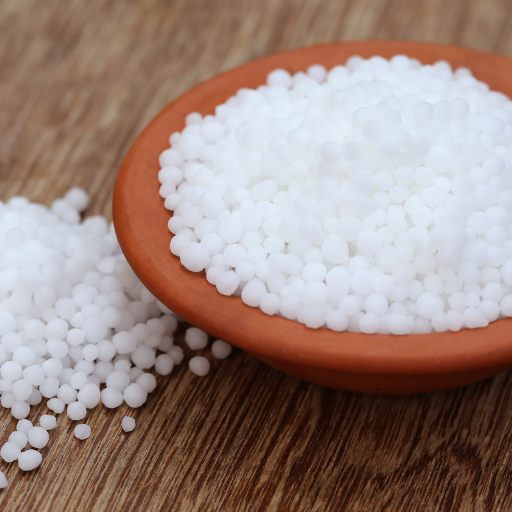
Prilled urea is often of uniform size and shape, thus making it easily handled and uniformly spread across fields. That kind of form is especially useful when extreme precision is in high demand. Nevertheless, prilled urea may cake or lump more easily in specific storage conditions. On the other hand, granular urea usually has a higher durability and a lesser proneness to caking during storage, therefore making it ideal for longer-term storage needs. Granular urea also has a greater bulk density which enables its more efficient transportation and application. However, both forms of urea are equally effective in supplying essential nitrogen content to plants under correct circumstances. To sum up, whether farmers choose prilled or granular urea will mainly depend on their specific agricultural requirements, storage capacity and application methods that would be suited each farm.
Comparative Analysis of Solubility and Efficiency in Plant Absorption
While comparing the solubility of prilled and granular urea’s, the dissolving rate for prills are faster resulting from small particles sizes used. Such can be very important where fast supply of nitrogen is required. Contrarywise, granules take time dissolve due to large particle size hence offer controlled release of nitrogen which is an advantage over long term nutrient supplies.
In terms of efficiency in plant absorption both forms are highly efficient as well as urate which influence them include but not limited to; soil type application method environmental condition etc Technical parameters associated with this include dissolution rate which tells how quickly does the material dissolve into water Prills dissolve within 30-60 seconds per gram while granules take approximately 60-90 seconds per gram.
Another important parameter is nitrogen use efficiency (NUE), which measures the fraction of applied nitrogen that is absorbed by plants. Both forms generally exhibit around 50-60% NUE although this varies depending on technology used in applying it as well as environmental influences such as temperature wind etc. This efficiency can be further enhanced by using precision agriculture technologies to ensure that urea is correctly placed and timed.
Also, the risk of volatilization, where atmospheric nitrogen is lost as ammonia gas, is similar for both forms but can be reduced by incorporating or applying urease inhibitors to prilled or granular forms respectively.
To sum up, although prilled urea readily dissolves while granulated one has a more controlled release with both having almost equal rate of efficiency in terms of nitrogen absorption if applied properly. But such choice would primarily depend on specific agricultural need based on environmental condition.
Practical Considerations: Storage, Application, and Cost Differences
In discussing the storage of prilled versus granular urea, several things come into play. Prills are prone to caking plus degradation over time due to their smaller particle size and larger surface area which makes them take up moisture quickly. Therefore, it is necessary to store prills somewhere cool and dry because they are sensitive materials. On the other hand, large particles make granules less likely to cake and easier for handling over a longer period thus ensuring better storability.
Choice between prilled and granular urea in terms of application often depends on the method employed. Prilled urea has smaller particles making it more spread out uniformly which makes it ideal for application through aerial or broadcast. This uniformity can help to improve the even distribution of nitrogen in the field. Conversely, for inclusion into the soil, granular urea is quite effective since it includes larger particles that mean more protracted release of nutrients. For both types, precision agriculture technologies have GPS-guided applicators that will assure optimal distribution and absorption.
Cost differences between prilled and granular urea can be considerable. Usually, prilled urea is cheaper than granular one due to lower production and processing costs. Yet, by taking advantage of storage attributes as well as slow release characteristic, granular urea’s slightly higher cost can be justified with regard to cost-effectiveness over longer periods especially when these conditions warrant such peculiarities.
- Dissolution Rate: Prilled Urea normally dissolves within 30-60 seconds per gram while granules take 60-90 seconds per gram to dissolve.
- Nitrogen Use Efficiency (NUE): NUE typically ranges between about 50% and 60% for both forms.
- Volatilization Risk: Similar for both forms but this can be reduced by incorporation them properly into soil or employing inhibitors like urease.
These practical considerations along with technical parameters would enable farmers to make informed choices regarding the type of urea that would best suit their specific agricultural practices.
Reference sources
- University of Minnesota Extension
- Source Link: Guide to using urea as a crop fertilizer in Minnesota
- Summary: This guide provides comprehensive information on the use of urea as a crop fertilizer, covering essential topics such as application methods, rates, and storage, thus demonstrating its effectiveness as a nitrogen source.
- ResearchGate
- Source Link: Production of granular urea as nitrogenous fertilizer
- Summary: This publication explores the industrial production of granular urea and its growing demand as a nitrogenous fertilizer, highlighting its benefits in terms of high nitrogen concentration and efficiency in agricultural use.
- Nodral
- Source Link: Granulated Urea: A Highly Effective Nitrogen Fertilizer
- Summary: This news article discusses the introduction of granulated urea by NODRAL, emphasizing its role as an effective nitrogen fertilizer that can significantly boost plant growth and overall crop yield.
Frequently Asked Questions (FAQs)
Q: What makes granular urea a recommended source of nitrogen for plants?
A: Granular urea is a highly concentrated source of nitrogen, which is crucial for plant growth. It is made from ammonia and carbon dioxide, resulting in a product that contains up to 46 percent nitrogen, making it one of the highest nitrogen content fertilizers available. This rich source of nitrogen is essential for photosynthesis and helps in the rapid growth of plants, making urea fertilizer a preferred choice.
Q: How do customers find the fertilizer granular form, especially urea, in terms of ease of use?
A: Customers find the granular form of urea fertilizer easy to apply directly to the soil around their plants. This ease of use is because the granules are simpler to measure, distribute evenly, and incorporate into the soil, compared to liquid fertilizers or other forms. The granular nature also helps in slow-release feeding, providing a steady supply of nutrients.
Q: Are there any significant differences between prilled and granular urea in their effectiveness as a fertilizer?
A: Both prilled and granular urea are effective as a source of nitrogen for plants, but they differ mainly in their physical characteristics. Prilled urea is smaller and smoother, while granular urea is larger and more coarse. The granular form is often considered superior in agricultural use because it is less prone to caking, easier to spread over large areas, and its larger size reduces nitrogen loss to the atmosphere. This makes granular urea more efficient and cost-effective for farmers.
Q: Can urea be applied throughout the growing season, or is there a best time for its application?
A: Urea can be applied at different stages of the growing season, but for the best results, it should be applied at times when plants are most in need of nitrogen. This is typically in the early stages of growth when plants are rapidly expanding and need plenty of nutrients. It’s also efficient to apply urea before planting and during vegetative growth. However, it is essential not to apply urea too close to harvest time, as high nitrogen levels can impact the quality of the fruit or vegetables.
Q: What should gardeners and farmers not do when using urea as a fertilizer?
A: When using urea as a fertilizer, it’s important not to apply it on foliage or plants in very high concentrations, as the high nitrogen content can cause leaf burn and can be harmful to plants in direct contact. Also, urea should not be used just before rain is expected, as it can be washed away before it has a chance to be absorbed by the soil, leading to a waste of fertilizer and potential environmental pollution. Gardeners and farmers should also avoid applying it in very hot or dry conditions to minimize nitrogen loss as ammonia gas.
Q: How does incorporating urea fertilizer into the soil benefit plant health and growth?
A: Incorporating urea fertilizer into the soil benefits plant health and growth by providing a rich source of nitrogen, which is a vital nutrient for plants. It promotes vigorous leaf growth, enhances green color, and improves overall plant health by enabling more efficient photosynthesis. Additionally, as urea breaks down in the soil, it forms ammonia, making nitrogen available to plants in a form they can use. This process supports strong vegetative growth, increases yield potential, and improves crop quality.






